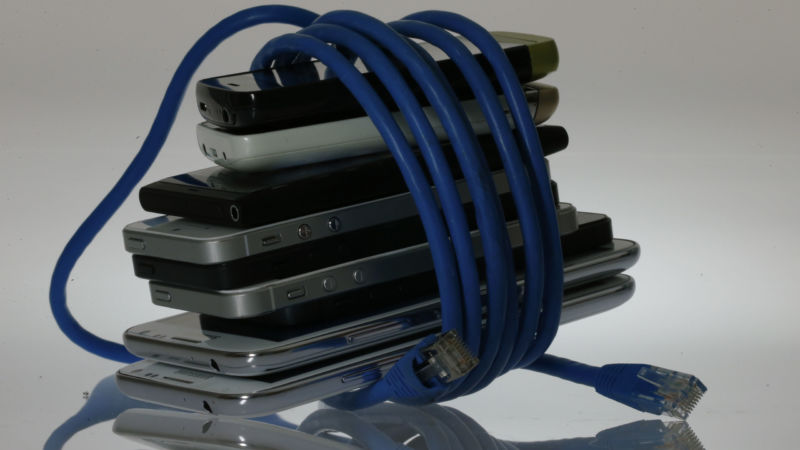While smartphones can be innovative and productive tools that allow lawyers and other professionals to stay connected, employers should be aware of the potential pitfalls
An increasing number of organizations are concentrating much of employees’ corporate access and business functionality into one device: Smartphones. However, is there a downside to concentrating so much onto a single device? Are these devices too powerful? Or, too feature-rich that they pose more problems than solutions?
Without a doubt, today’s smartphones have significant computing power. The smartphone in your pocket has many times the processing power of the computers that landed man on the Moon. In fact, today’s iPhones are so powerful that it has been suggested that a single iPhone could be used to guide more than 120 million Apollo-era spacecraft to the moon — all at the same time.
Overall, while smartphones can be powerful tools that enable people to stay connected and productive, it is important to be aware of the potential downsides and how to use these devices responsibly. This may involve setting limits on employees’ phone usage, securing personal information, and taking steps to protect privacy.
Smartphones can be packed with too many features that might not be necessary for the workplace. Yet, smartphones are designed to be versatile, and certain features and apps often are critical to the functionality of a modern smartphone.
A recent poll showed that about 80% of all smartphone users only use between 8 and 12 apps on a consistent basis, typically for tasks like email, messaging, social networking, news, games, weather, and photography. But only about 10% to 15% of users said they also use smartphones for serious productivity.
Some of the other potential downsides to concentrating so much functionality in a smartphone, include:
Dependence — By concentrating so many functions in a single device, people may become dependent on their smartphones for a wide range of activities, including communication, navigation, entertainment, and information gathering. This can lead to an unhealthy dependence on the device, which can have negative impacts on mental and physical health.
Distractions — Smartphones can be a major source of distractions, with apps, games, and social media platforms vying for users’ attention. This can lead to decreased productivity and focus and can even contribute to mental health issues such as anxiety and depression, much like dependence. Further, excessive smartphone use can also disrupt your sleep. Lack of sleep can have a serious impact on overall mental health and memory. It also can affect your ability to think clearly, and possibly reduce your cognitive and learning skills.
Cost — Smartphones can be expensive, rivaling the cost of a desktop computer, and the cost of maintaining them can also be significant. This can be a burden for individuals and companies, especially those that have a large number of employees.
Environmental impact — The production and disposal of smartphones can have negative environmental impacts, including the use of hazardous materials and the generation of electronic waste.
Security — By far the biggest issue with today’s smartphones in the workplace is security. Among the most critical security concerns are those involving:
-
-
-
-
- Vulnerability: Smartphones can be vulnerable to security threats such as malware, viruses, and hacking. This can be a concern for individuals, as phones often contain a wealth of personal information; and for companies, as employees may use their phones to access company systems.
- Privacy: Smartphones are equipped with a variety of sensors and features that can be used to track users’ locations and activities. While this can be convenient for some purposes, it can also raise privacy concerns, as people may not want their movements and activities to be constantly monitored.
- Data breaches: Smartphones can be vulnerable to data breaches, which can occur if the device is lost or stolen, or if it is hacked. This can be a concern for companies, as employees may store sensitive information on their phones or use them to access company systems. Ensuring that smartphones are properly secured and regularly updated is important to protect against these threats.
- Malware: Smartphones can be infected with malware, which is software that is designed to cause harm to a device or to steal information. Malware can be delivered through malicious apps, websites, or emails, and can be difficult to detect. Ensuring that employees only download apps from trusted sources and that their phones are protected with antivirus software can help to reduce the risk of malware infection.
- Phishing: Smartphones can be used to send and receive emails, which makes them vulnerable to phishing attacks. Phishing is a type of cybercrime in which attackers use fake emails or websites to trick people into divulging sensitive information or installing malware. Employees should be trained to recognize and report phishing attempts, and companies should implement measures to protect against these attacks.
-
-
-
Ultimately, whether smartphones have too many features depends on the perspective and needs of the individual user and possibly, their employer. So, is this amazingly powerful device, in fact, too powerful? The answer is no. True, it needs to be properly secured, but the smartphone is too useful to dismiss. Despite the glut of features and potential risks, the smartphone is a great invention. It provides a great depth of functionality to those users who need it and can use it, while providing simpler or reduce functionality for those who require less.
In the long run, smartphones are unlikely to be the apotheosis of personal technology. Likely some more personal and more intimate technology may come along and supplant our addiction to the smartphone. Maybe something that folds, is worn, is embedded under our skin, or is ambiently available in our environment.
For today, however, the true power of smartphones at work lies in their ability to connect people and facilitate communication and collaboration. These are critical metrics for success and difficult to meaningfully measure, but by continuing to leverage the advantage and capabilities of these devices, firms can create more efficient and effective teams that will grow as this technology evolves.







